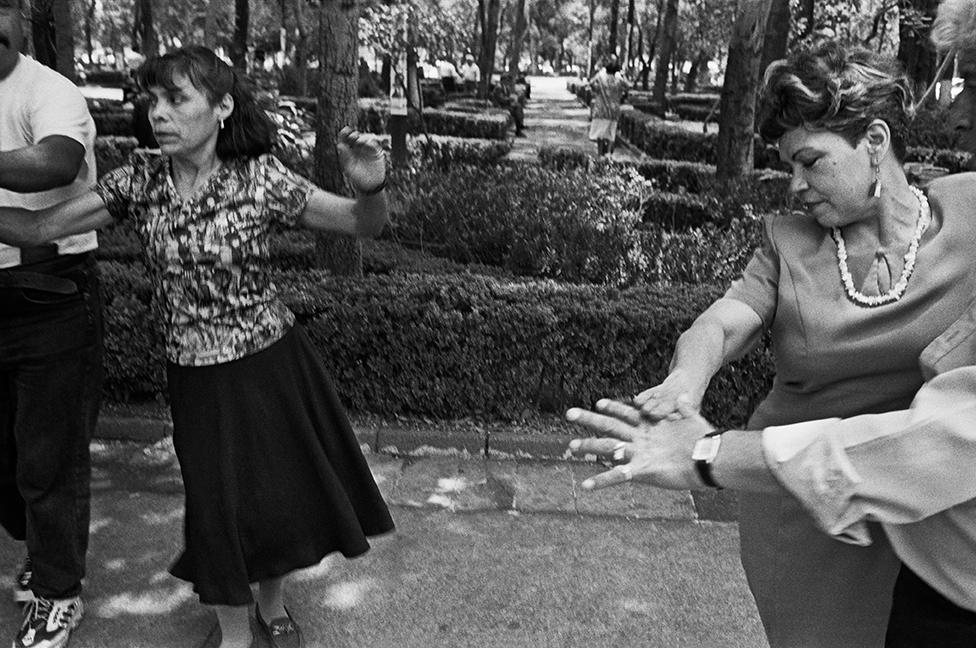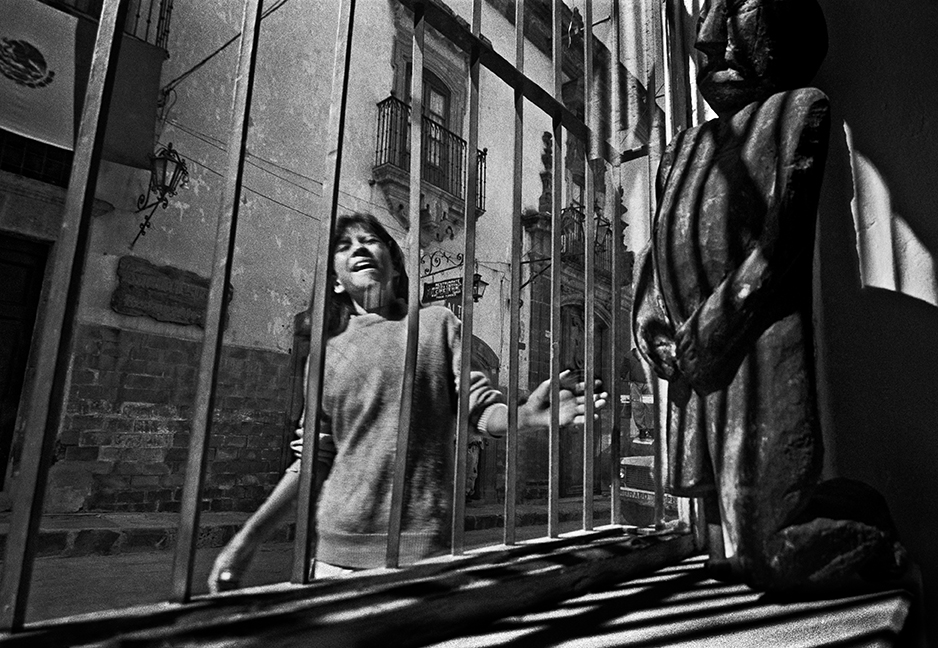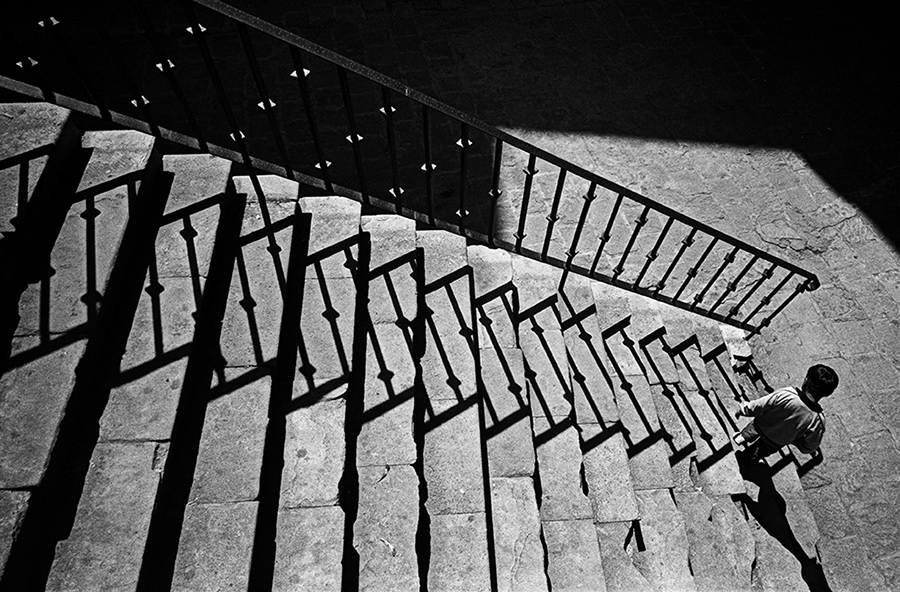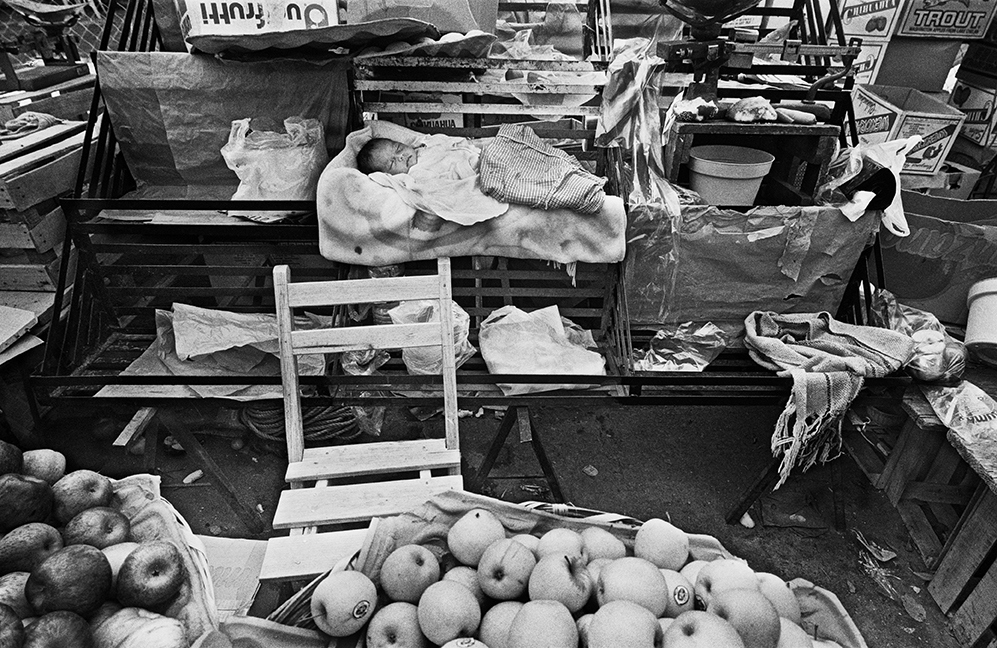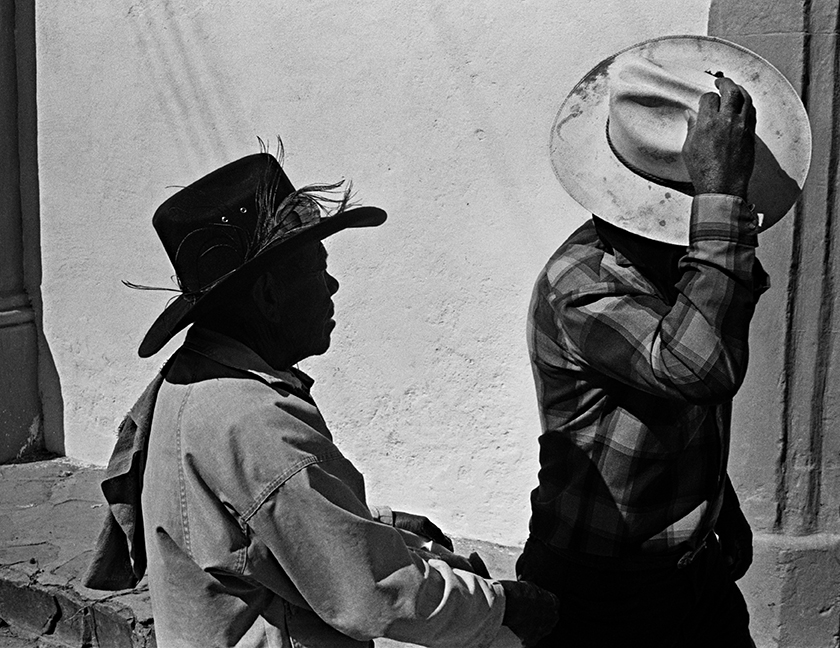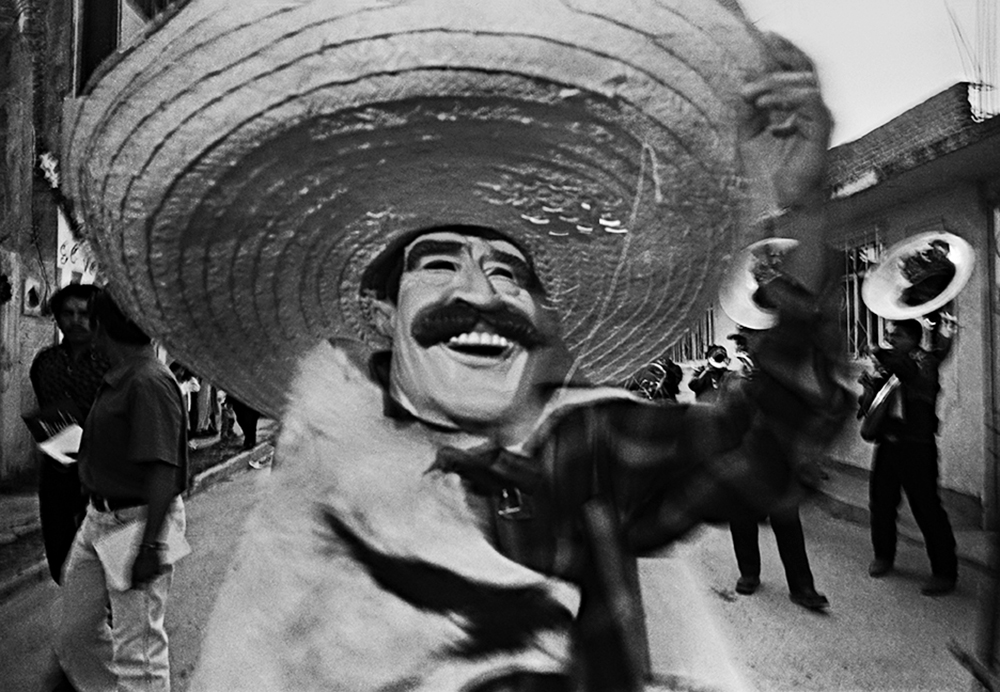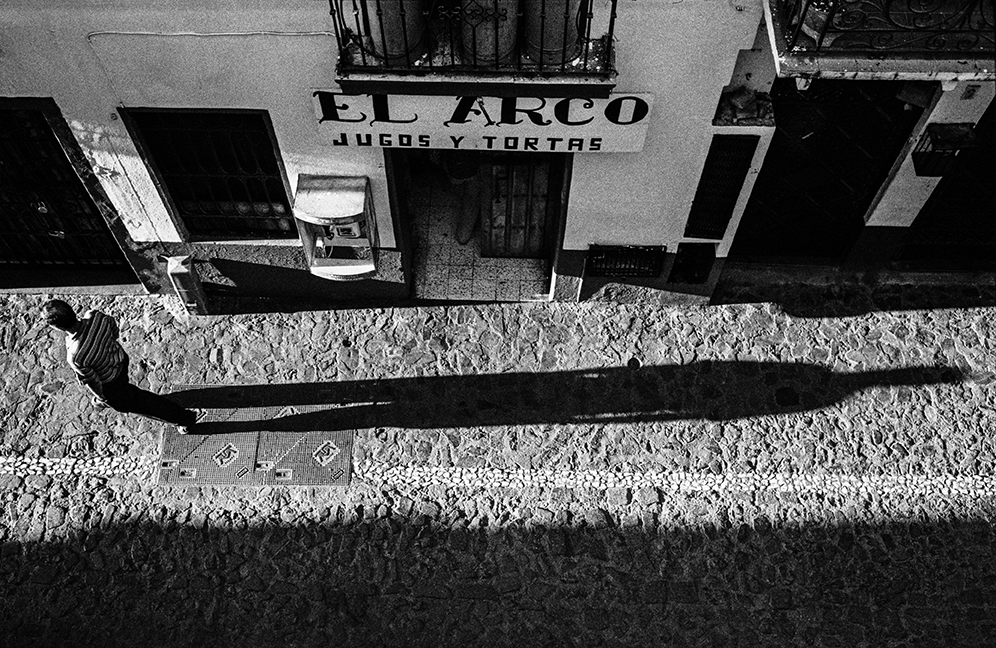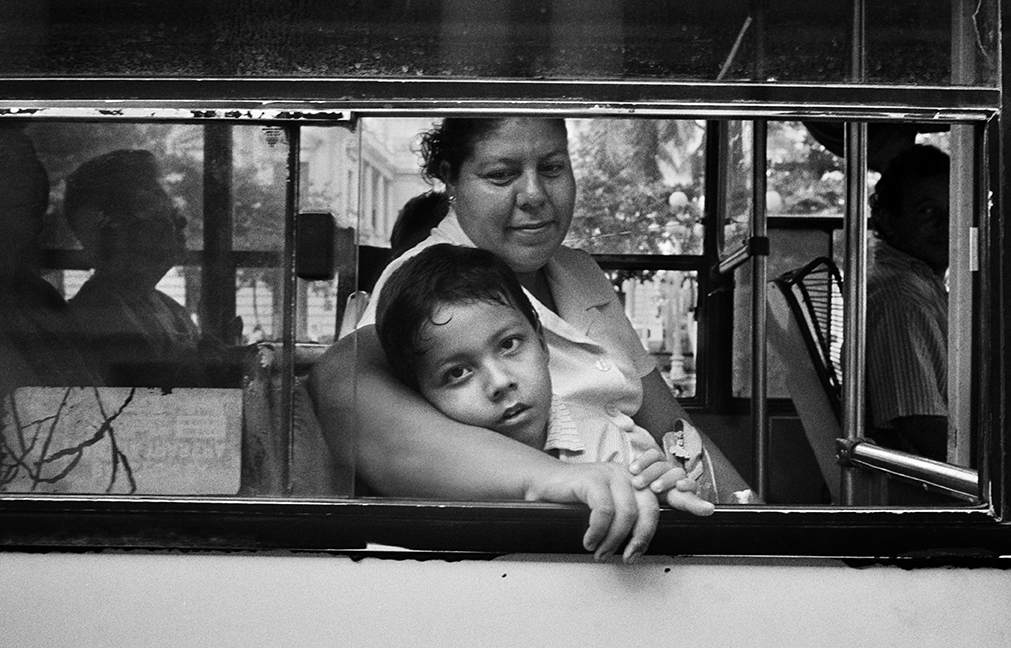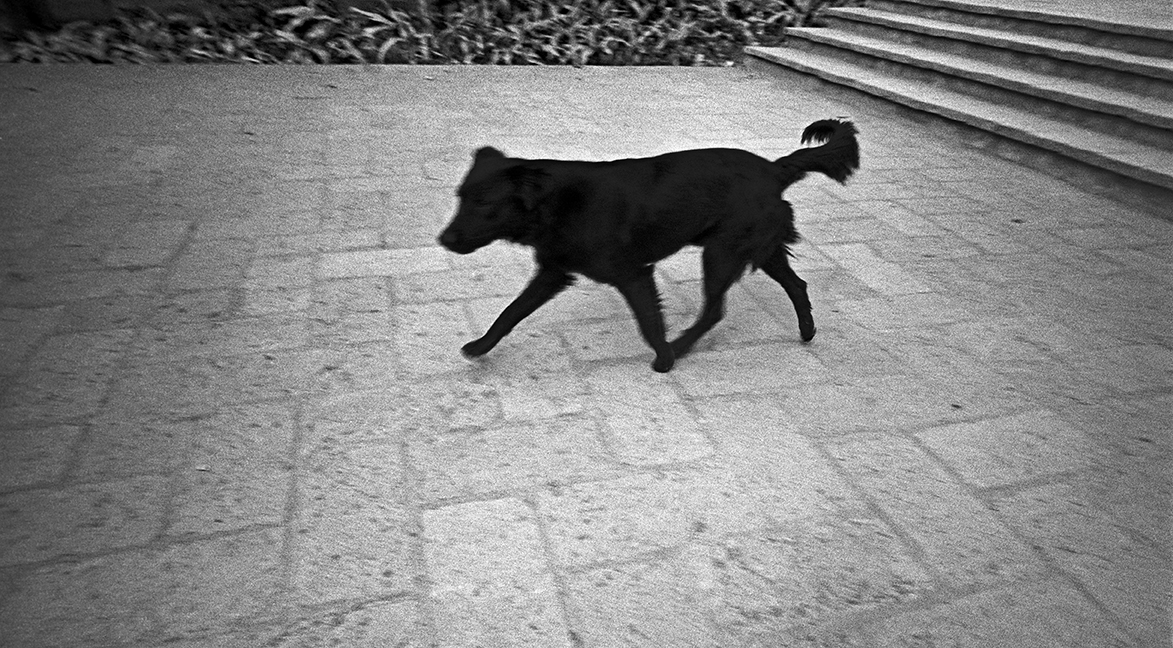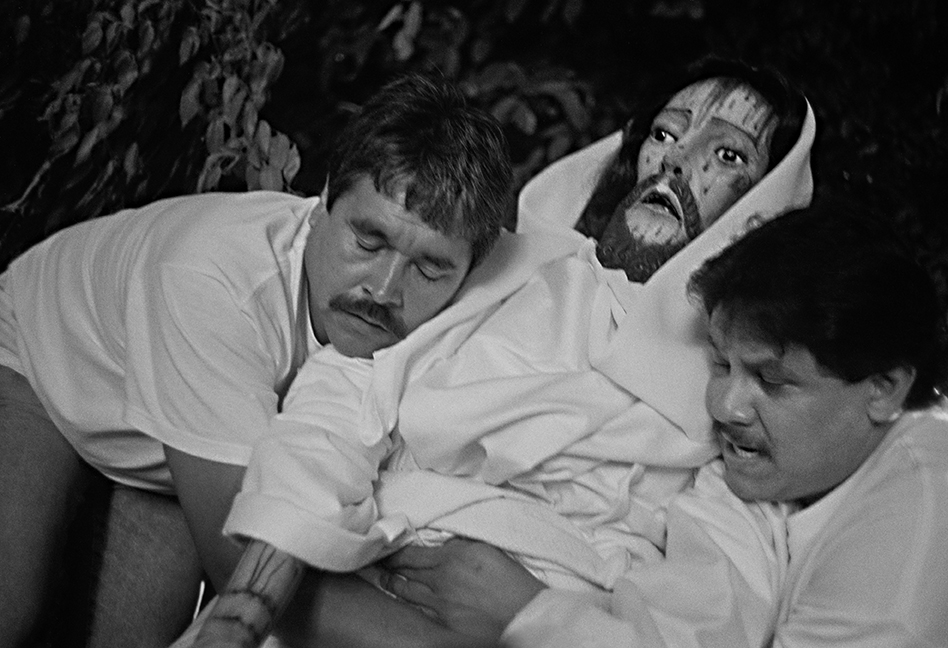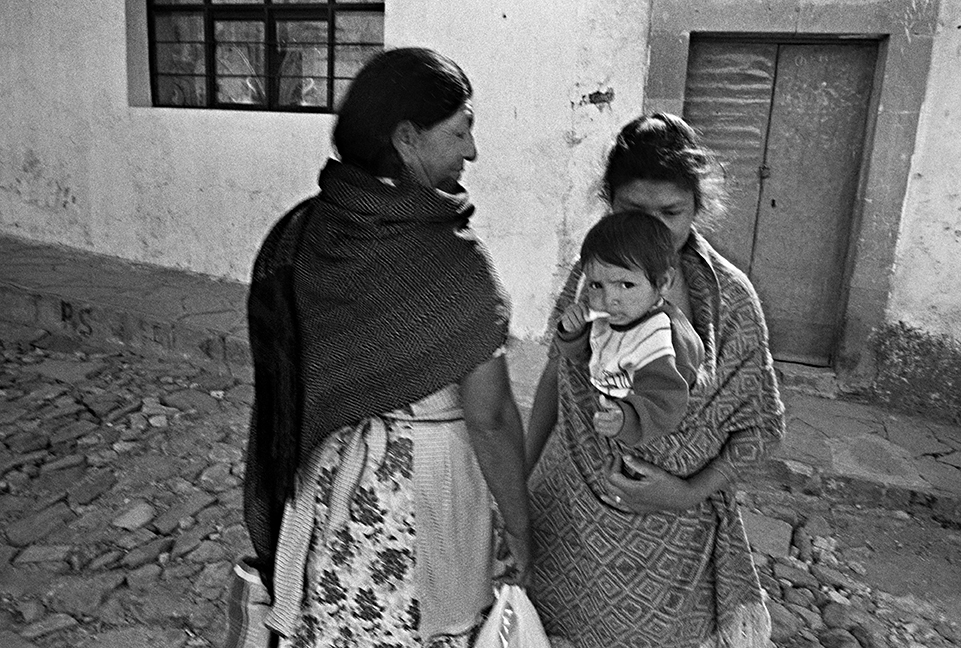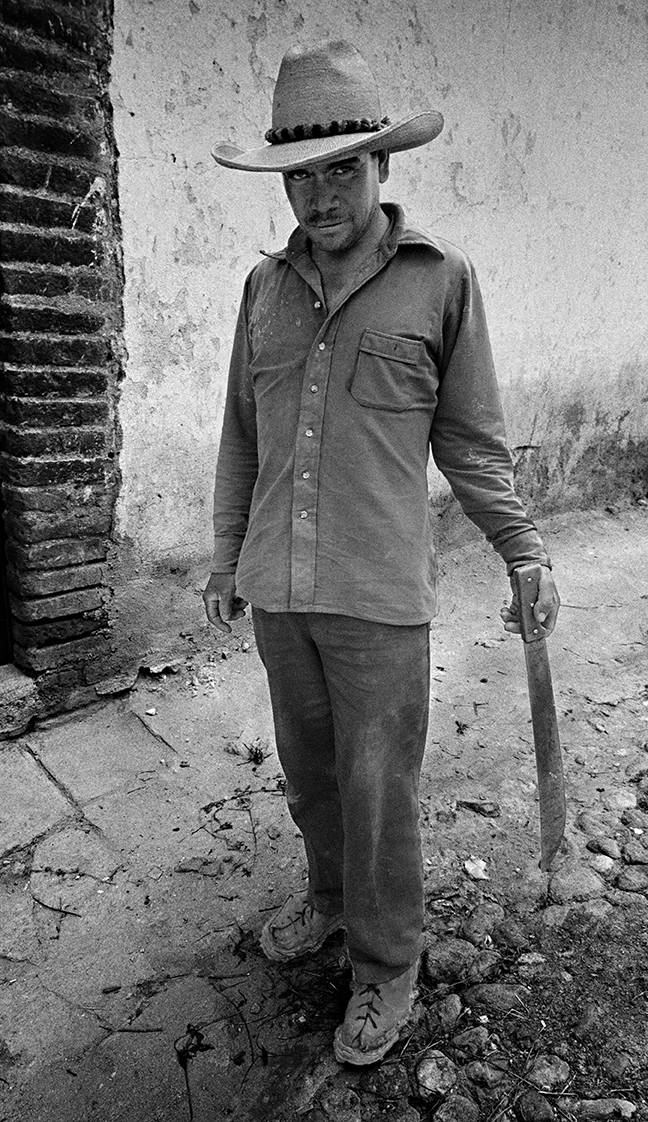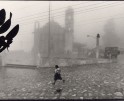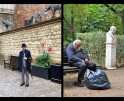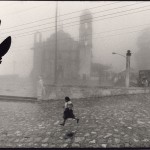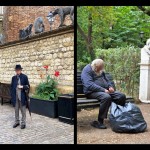Harvey Stein: Mexico Between Life and Death
I don’t believe there is a better way to get to know a place than by traveling on foot, especially in a place as rich and full of life as Mexico. How else would you expect to happen upon a swirling crowd of dancers, or a child sound asleep on the shelves of a market fruit stand, or the long shadows cast in an alley as the sun sets?
This is how Harvey Stein has come to know Mexico. Over the course of his fourteen trips there between 1993 and 2010, Stein captured the vibrancy of public ritual and myth in city streets as well as intimate moments of joy, irony, and grief. His photographs are presented in a new book titled Mexico Between Life and Death, published by Kehrer Verlag. The images in the book appear as small vignettes within the whole, as Stein seeks to inspect the many aspects of Mexican culture as it relates to death, religion, and myth. We see masks, dogs, children, expressions of affection or despair, dancing, and grieving – all a part of the celebration of death in Mexico not as an end to something, but a spoke in the wheel of life.
Harvey Stein is a professional photographer, teacher, lecturer, author and curator based in New York City. He currently teaches at the International Center of Photography. Stein is a frequent lecturer on photography both in the United States and abroad. He is the Director of Photography at Umbrella Arts Gallery, located in the East Village of Manhattan. He has also been a member of the faculty of the School of Visual Arts, New School University, Drew University, Rochester Institute of Technology and the University of Bridgeport.
Stein’s photographs have been widely exhibited in the United States and Europe—85 one-person and over 165 group shows to date. He has curated 61 exhibits since 2007. His photographs are in more than 57 permanent collections, including the George Eastman Museum, Bibliotheque Nationale, the Art Institute of Chicago, the Museum of Fine Arts, Houston, the Brooklyn Museum of Art, the New Orleans Museum of Art, the International Center of Photography, the Denver Museum of Art, the Carnegie Museum of Art (Pittsburgh), the Portland (Oregon) Museum of Art, the Museum of the City of New York, Museet for Fotokunst (Odense, Denmark), Musee De La Photographie (Charleroi, Belguim), the Portland (Maine) Museum of Art, the Corcoran Gallery of Art, the American Museum of Natural History, the Santa Barbara Museum of Art, the Addison Gallery of American Art, The New York Historical Society and Museum, and among others, the corporate collections of Johnson & Johnson, Hewlett Packard, LaSalle Bank (Chicago), Barclay Bank and Credit Suisse. His work is represented by Sous Les Etoiles Gallery, New York City.
As a teenager, I imagined Mexico to be a distant, sun-struck country where people are poor but with large, happy families and a carefree, non-competitive way of living. A place of mixed races and heritages, of quasi-catholic/indigenous religions, and of ambiguous, secret rituals filled with much joy and pain. A country filled with a machismo that embraces death; a land of dancing skeletons, laughing ghosts and miracles. It was a vision of a country that I knew I could be comfortable in.
Finally I went to Mexico and have made 14 trips there beween 1993 and 2010. I have never been disappointed; it’s a vibrant, friendly, emotionally available, and sometimes raw land where a stranger is looked upon with curiosity and warmth.
I go as a wanderer, photographing in a country often strange to me. I hear words not known, see things I don’t understand, view acts of kindness and violence, smell new odors and taste new foods; I walk down small, unfamiliar cobblestone streets. I react and photograph intuitively. When in Mexico, I am dizzy with new experiences and free to go anywhere and to do anything. The feeling is of endless possibilities. My limitations are my only restraint.
I try to pierce the ever-present mysteries of this multifaceted land to come to some understanding of life and death through Mexico’s special alliance with these subjects. and at the same time to reveal my fascination with Mexico’s culture, people and endless incongruities. Especially captivating is to photograph at night, when the shroud of darkness enhances the mystery and ambiguity of lives lived. I have photographed primarily in small towns and villages and mostly during festivals (Day of the Dead, Easter, Independence Day) that highlight the country’s unique relationship to death, myth, ritual and religion. – Harvey Stein
Mexico is where the real merges with the imaginary, the living with the dead and the half-remembered with the once sensed. It is a country of paradox, beautiful and serene, but with a palpable air of poverty and struggle. Many people of Mexico have little, yet express their generosity by offering an outsider what little they have.
The images show fragments of what Mexico is, a country of incredible contrasts and contradictions. Mexico is about piercing light and deep shadow, of stillness and quick explosiveness, of massive tradition and creeping progress, of great religious belief but with corruption as a way of life. It is a land of pulsating life, a country so close to the United States yet so far away, a country with more than 50% of its population under 20 years old but where old age is revered.
These photographs provide an illusion rather than a representation of reality. They portray the instant of recognition, embodied in a fraction of a second; the ordinary is made transcendent. The images reside in a surreal world halfway between reality and fantasy and explore the constant mysteries of life and death that seem to surround the traveler in Mexico.
Mexicans often view death as a natural part of life, an attitude derived from the Aztecs, Toltecs, and the Mayans. For the people of ancient Mexico, death was not an end, but merely a stage in a continuous cycle. Death meant to be reborn. Mexicans still consider death as a step beyond; it is a change, a transformation; the soul travels to lead another life, another experience. Many of the photographs explore Mexico’s vigorous attachment to life, and to a reluctant acceptance of the presence of death.
Posts on Lenscratch may not be reproduced without the permission of the Lenscratch staff and the photographer.
Recommended
-
Suzanne Theodora White in Conversation with Frazier KingSeptember 10th, 2025
-
Jake Corcoran in Conversation With Douglas BreaultAugust 10th, 2025
-
Student Prize 2025: Top 25 to WatchJuly 20th, 2025
-
MOPD Reviews: Paul Stein: Nothing Is RevealedJuly 2nd, 2025
-
Jordan Gale: Long Distance DrunkFebruary 13th, 2025

